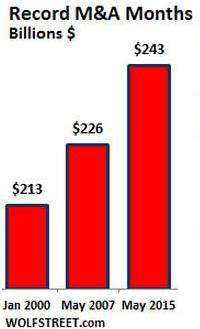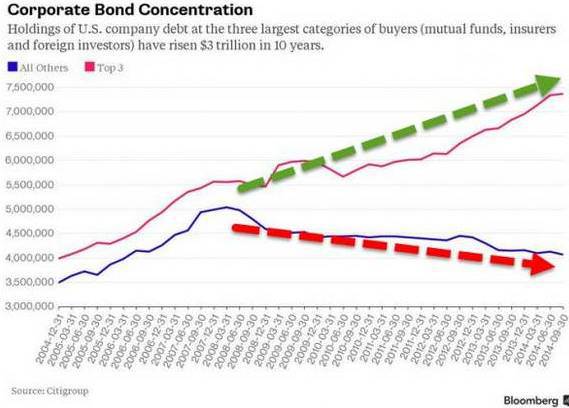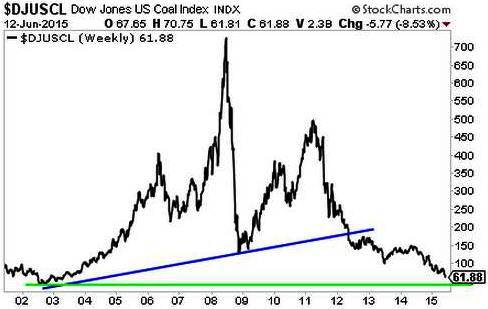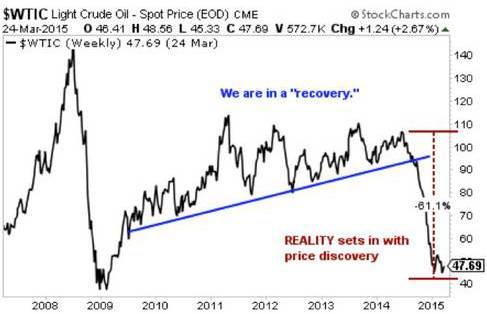There are three underlying factors that are currently signaling material danger for US stocks:
- record M&A activity
- an unstable corporate bond market and
- a crash in economically sensitive commodities.
1) Mergers & Acquisitions Hit Record
Global growth is languishing, corporate revenues too, but CEOs are trying to show they can grow their companies the quick and easy way… by issuing junk debt for mergers and acquisitions. The desperation among CEOs to issue all kinds of cheap debt while they still can has created the largest M&A boom in US history. Bond issuance has totaled over $100 billion per month for the past four months, the longest such streak ever. In May, M&A deals hit an all-time record of $243 billion. The prior two record months: May 2007 ($226 billion) and January 2000 ($213 billion) were followed by two of the largest stock market crashes in history.

2) Unstable Concentration in the Corporate Bond Market
The corporate-bond market has expanded by $3.7 trillion during the past decade, yet, almost all of the issuance is now in the hands of just 3 buyer types (mutual funds, issuers, and foreign investors). There used to be 23. This concentration is expected to cause a liquidity crisis if yields continue higher, investors flee the credit market, the selling is more than the market can absorb, and prices become extremely unstable.

3) Commodity Prices Reflect A Return To Reality
The foundation of the financial system is debt. And that debt is backstopped by assets that the Big Banks can value well above their true fundamental values to use as collateral. The “pricing” of the financial system can be elevated significantly above fundamentals. But eventually the system will re-price itself back to reality. To understand reality one only needs to take a look at the prime macro indicators backstopping the system. These two important economically sensitive commodities are coal and oil and both reflect a reset on the growth recovery narrative.
Coal accounts for 40% of global electrical generation. It may be the single most economically sensitive commodity on the planet. With that in mind, consider that Coal, (via the Dow Jones US Coal Index) ended a multi-decade bull market (blue line below) back in 2012. In fact, not only did the bull market end, but coal prices have fallen to a level not seen in 12 years (green line).

Those who believe in the global growth narrative created by Governments and Central Banks will dismiss this as a result of the US’s shift away from Coal as a prime energy source. But the collapse in Coal prices goes well beyond changes in the energy policy of the world’s largest energy consumer… it reflects a return to reality.
Now look at Oil. For most of the “recovery” narrative Oil prices moved higher, creating the demand illusion that the world was returning to economic growth (blue trend line below). Then Oil fell back to reality…over 60% in less than six months.

But the collapse in oil prices has been more than extreme…it took out a trend line from 2002!

The growth narrative is over … reality is setting in.
